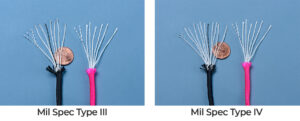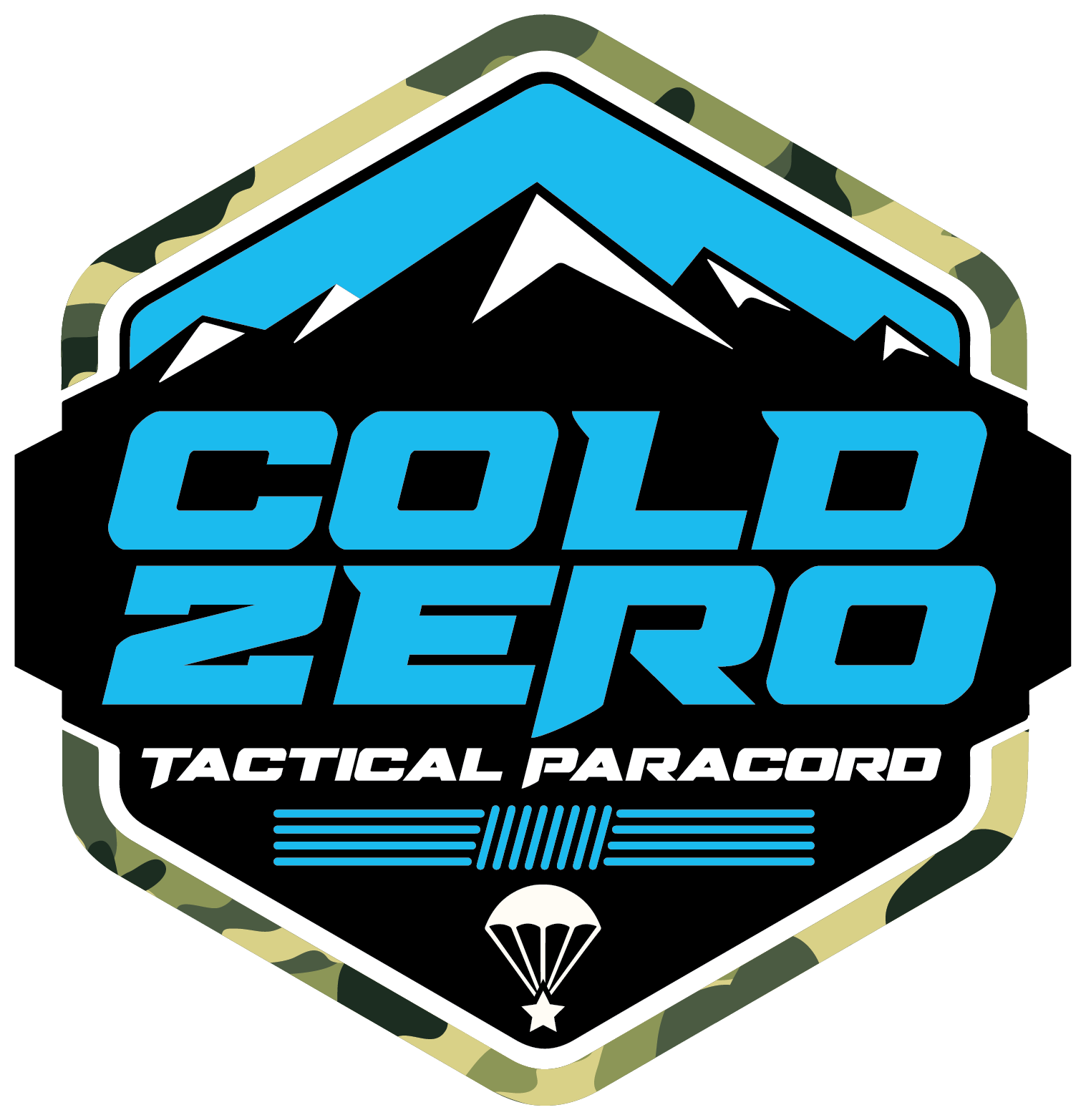FAQs
What is the meaning of COLD ZERO?
The term Cold Zero is an FBI sniper term. It refers to the cold bore shot which is the first shot after pulling a rifle out of the case and zero is the term used when your bullet hits. Cold Zero references successfully hitting your target on your first round. This translates to our COLD ZERO Tactical Paracord because when it comes to paracord and survival situations our stuff will always hit the target right out of the bag!
When was Mil-Spec Paracord First Used?
Historically, Mil-Spec Parachute Cord was first used by US Paratrooper Units during World War II as the material of choice for parachute suspension lines. Parachute cord quickly proved to be a versatile resource with far more applications than just parachutes. United States Airborne Warriors realized the numerous benefits of using parachute cord while conducting operations in the field.
In the decades following World War II, Mil-Spec Parachute Cord continued to prove its worth in bushcraft, survival and the general utility arena. However, it did not reach its pinnacle status until 1997 when NASA brought attention to the cordage during Space Shuttle Discovery’s 22nd flight on mission STS-82. Mil-Spec Paracord was used in conjunction with Velcro and other materials to repair tears in the Hubble telescope’s insulation material. NASA’s remarkable use of Paracord served to validate the cord’s prowess and establish it as predominant survival gear.
**COLD ZERO TACTICAL PARACORD has contracted with the same Government Certified Manufacturer that supplied NASA’s Space Shuttle Discovery Mission!
Construction: Mil Spec vs Commercial Paracord
In the cordage world, paracord is known as a kernmantle rope. Meaning the rope is constructed with an interior core protected by a woven exterior sheath to optimize strength, durability, and flexibility. This construction allows the core yarns to handle the load of tensile strength, while the sheath protects the core from abrasion and wear during use.
Mil-Spec Paracord (MIL-C-5040H) is the U.S government specification for parachute cord used by the United States Military (link to spec). It requires and is manufactured with different raw materials and specifications than Commercial 550 Cord.
Sleeve:
Mil-spec Paracord is comprised of a braided sheath (sleeve) that is 100% Type 66 Nylon (higher melting point). If deconstructed the sleeve looks to be made up of 32 strands of nylon yarn just like Commercial 550 cord. However, for Mil-Spec Parachute Cord each of the 32 strands are made with 3 individual ends twisted together (3×32=96 total). This creates a superior product that is far more pliable and durable (Abrasion and UV Resistance).
Core:
Inside the sleeve for Mil-Spec Paracord you will find either 7 inner strands (Type III-550LB) or 11 inner strands (Type IV-750LB) accompanied by a colored I.D. strand which identifies the certified manufacturer (thereby confirming the cords authenticity). In Mil-Spec each of the 7 or 11 core strands are comprised of 3 individual strands (100% Type 66 Nylon) twisted together to meet the government specification. The inner strands carry the majority of the weight needed to meet the 550LB or 750LB test.
The core in Commercial 550 Cord (7 ends) is made of a waste yarn called “tirecord” (and sometimes just a fuzzy filler yarn). Each of the 7 strands have only two individual threads of “tirecord” material twisted together. The core yarn in Commercial Grade 550 Cord is far cheaper and less durable than the material required for Mil-Spec Parachute Cord.

What is diameter of 550lb Type III and 750lb Type IV?
In the government specification for Mil-C-5040 Type III (550LB) & Type IV (750lb) the nominal diameter is 5/32”. However, the 750LB Type IV is closer to 6/32.
How much will COLD ZERO Tactical Paracord stretch?
Our Mil-spec Paracord is required to have a minimum stretch of 30% under load.
Are 550 LBS and 750LBS the maximum tensile strength for Type III & Type IV?
No those are the minimum breaking strengths.
Type III : Minimum breaking strength = 550lbs.
Type IV : Minimum breaking strength = 750lbs
How is each length of paracord packaged?
Each length of COLD ZERO Tactical Paracord is packaged for convenience. They will all come pre-wound onto a winder, tube, or spool to eliminate the tangled mess that comes from loose cord in a bag.
50’ lengths come pre-wound on a reusable plastic winder
100’ lengths come pre-wound on a reusable plastic winder
200’ lengths come precision wound on a cardboard tube
1000’ lengths come hand inspected on a cardboard flanged spool
What are some emergency/survival applications for Mil-Spec Paracord?
- Sutures – The inner strands in Mil-Spec Paracord are both small enough and strong enough to close a wound in an emergency.
- Splint/Sling – Depending on the location of a muscle, bone, or joint injury you can use Mil-Spec Paracord to create a splint or sling that will help stabilize the injury to limit further damage.
- Rescue Line – In the case of an emergency water rescue situation (break through ice, crossing river etc.) time is of the essence. Having Mil-Spec Paracord accessible can be the difference of life or death.
- Makeshift Stretcher – If someone with you finds themselves completely immobilized out in the wilderness a paracord stretcher can be incredibly helpful.
Follow this link for instructions on how to make your own paracord stretcher
https://survivalhax.com/blogs/survivalhax/how-to-make-a-paracord-stretcher-to-move-injured-people
- Tourniquet – If you do not have a rapid application tourniquet paracord may be your only option when you cannot control the bleeding. Wrap the paracord above the wound (1-2” wide to avoid lacerating the skin) and tie a knot. Put a stick through the knot and turn the stick tightening the tourniquet to stop the bleeding.
- Repelling – Although Mil-Spec Paracord is not made for rock climbing it can be used in an emergency to get you down a cliffside. https://www.titansurvival.com/blogs/paracord-projects/create-an-emergency-rappel-using-paracord
- Fishing Line – You can make fishing line out of Mil-Spec Paracord by cutting a length and taking out the inner strands. You can use a single end of the 3-ply core strand if you are going for bigger fish or separate the 3-ply into individual smaller strands of core yarn.

